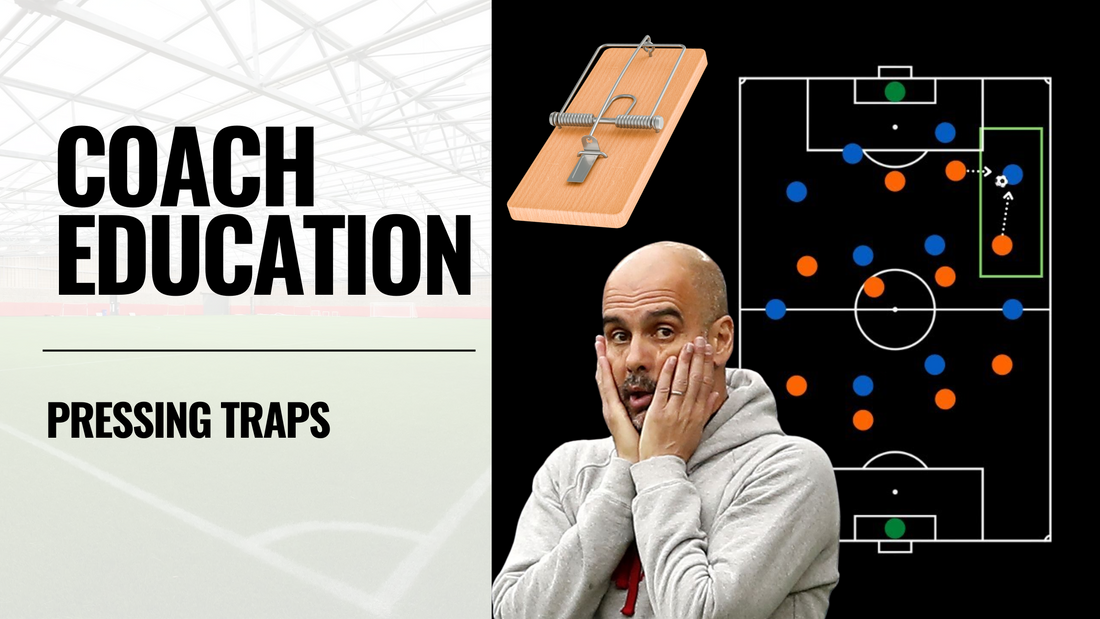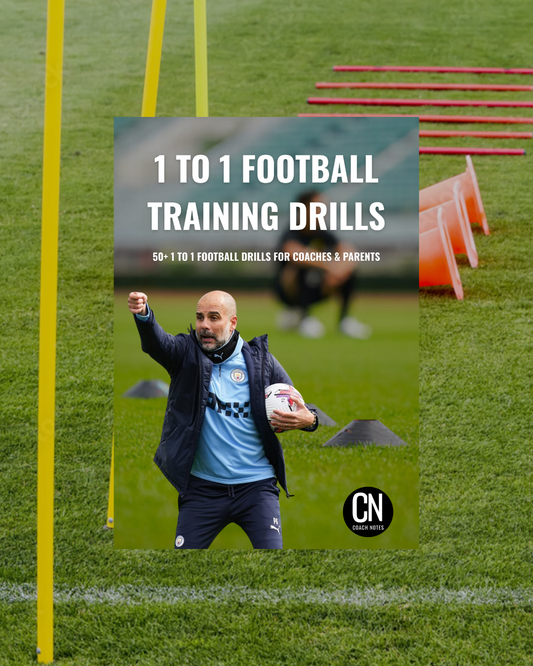
Pressing Traps
Share
Pressing in football is often associated with relentless intensity and athleticism, players sprinting aggressively to close opponents down high up the pitch. While this approach works well for teams with high-energy, well-drilled players, not every side has the athletic profile to press man to man for long periods.
That’s where pressing traps come in.
Pressing traps are a tactical tool used to guide the opponent into a pre-determined area of the pitch, allowing your team to press with purpose, coordination, and maximum efficiency. They reduce the physical demand of pressing and instead rely on structure, discipline, and smart triggers.
In this article, we’ll explore what pressing traps are, why they work, and how coaches can implement them in their own teams regardless of level or player profile.
Different Pressing Styles – The Context for Traps
Before diving into traps specifically, it’s helpful to understand where they sit on the pressing spectrum:
🔺 Man-to-Man High Press
- Every player has a clear pressing target.
- Great for disrupting structured build-ups.
- Demands high physical output and speed of recovery.
🛑 Passive/Low Block
- Sit deep, stay compact, and prioritise protecting space.
- Pressing is rare and usually reactive.
⚠️ Trap-Based or Triggered Pressing
- Defend in a mid or low block but press aggressively at specific moments.
- Use defensive positioning to guide play into a pre-planned area (the "trap").
This third approach pressing traps, allows teams to apply pressure without constant high-speed defending. It’s a method that prioritises intelligence over intensity.
What Is a Pressing Trap?
A pressing trap is a tactical pattern designed to:
- Guide the ball into a certain player or zone
- Trigger coordinated pressing once the ball reaches that point
- Create numerical superiority in that zone to win possession
Instead of pressing everyone everywhere, the defending team invites the ball into a predictable location, a "trap zone" then springs pressure from multiple directions once it arrives.
Examples of Common Pressing Traps
🔁 Wide Trap
The most common version. The defending team closes off central options, encourages a pass out wide, and then presses hard, using the touchline as an "extra defender."
Coaching Notes:
- Block inside passes with tight midfield positioning.
- Allow passes into wide areas with limited support.
- Activate full-back and winger to press aggressively once the ball arrives wide.
🔍 Target Player Trap
If an opposition player is known to struggle under pressure, the defending team might allow them to receive the ball before pressing tightly and trying to force an error.
Coaching Notes:
- Set midfield shape to allow passes into that player.
- Once they receive, press with two or three players from different angles.
- Be ready to win the second ball if they lose it or rush their decision.
🚦 Back Pass Trigger
Some traps are activated not by zones, but by player actions. For instance, a backwards pass might serve as a pressing trigger.
Coaching Notes:
- When the ball goes backwards, step up as a unit.
- Prevent the switch or central option and isolate the receiving player.
- Win the ball or force a rushed clearance.
Why Pressing Traps Work
✅ Conserve Energy
Teams don’t need to press all over the pitch. The trap narrows the required space and focuses effort.
✅ Outsmart, Not Outpace
You don’t need fast players to execute pressing traps. What you need is communication, awareness, and positional discipline.
✅ Force Predictability
If you know where the ball is going, you can pre-load your players to defend that area aggressively.
✅ Reduce Risk
Traps typically begin after the opponent makes a choice, not before. This limits the chance of being bypassed.
How to Coach Pressing Traps
🔁 Session Structure
Shape and Positioning (Unopposed)
- Work on compact defensive structure
- Train angles and spacing to guide the ball wide or central
Triggered Practice (Conditioned)
- Use triggers such as back passes or specific player movements
- Introduce rules that replicate pressing traps (e.g. bonus point for turnovers in wide areas)
Phase of Play (Opposed)
- Defending unit against building team
- Award points for successful regains in target zones
- Focus on communication and timing
🧠 Key Coaching Points
- Communication is essential. Everyone must know when the trap is “live”.
- Trigger clarity. Train players to recognise cues (e.g. loose touch, pass into specific player or zone).
- Press in numbers. One player cannot win the ball alone, design pressing triangles or double-press scenarios.
- Recovery and balance. While one part of the team presses, others must maintain compactness and cover.
Final Thoughts: Pressing with Intelligence
You don’t need elite pressing players to win the ball back high. With the right structure and game understanding, pressing traps allow you to control when and where pressure is applied. They're an efficient, intelligent method for regaining possession and highly effective at all levels of the game.
Pressing traps take coaching, clarity, and practice but when implemented well, they turn any team into a disciplined defensive unit with a clear plan.









